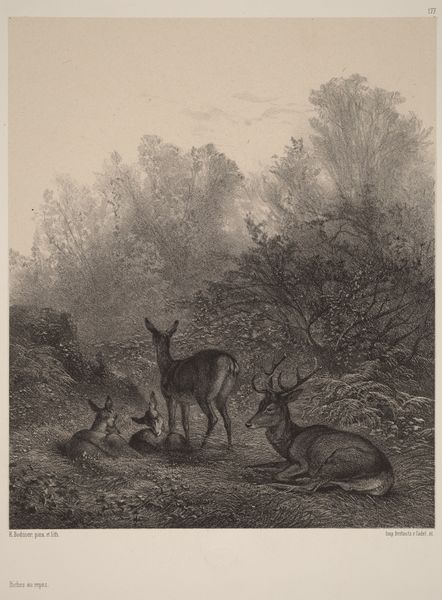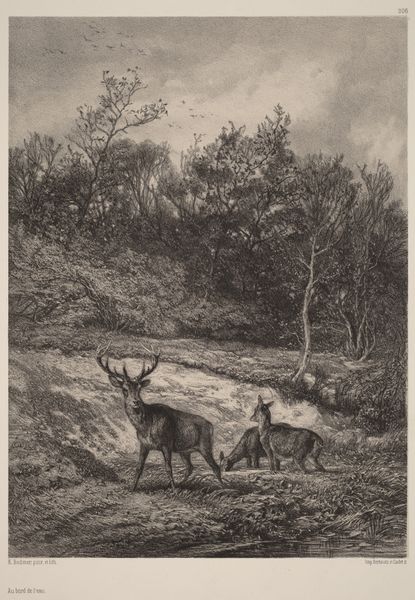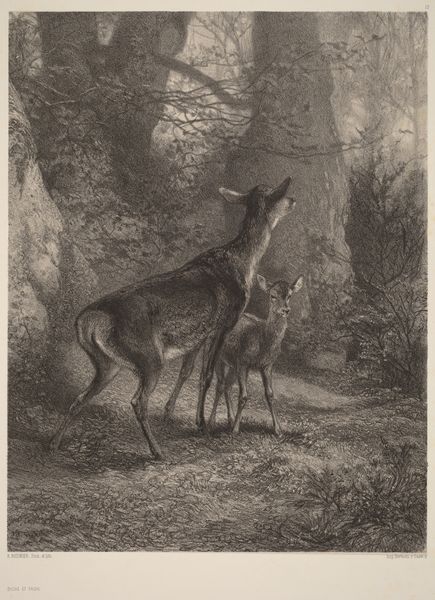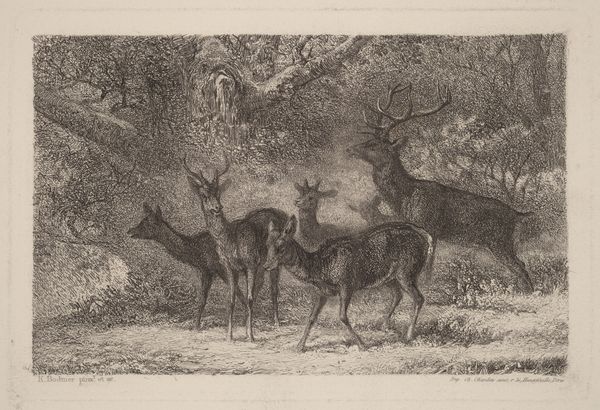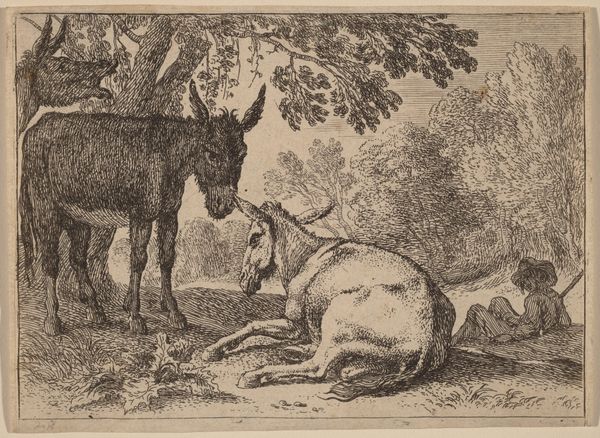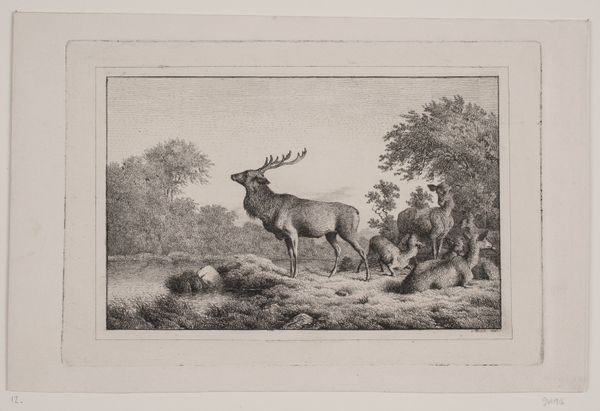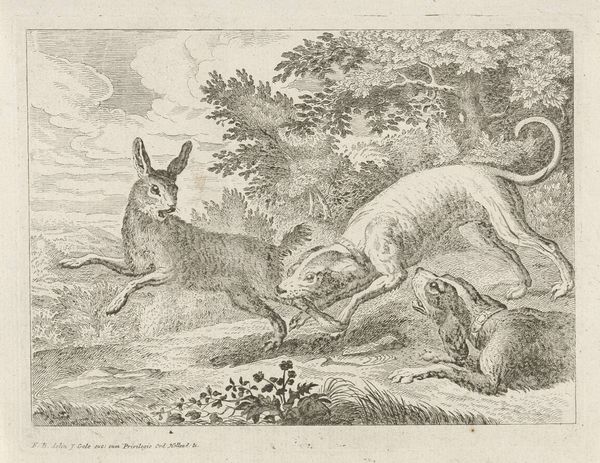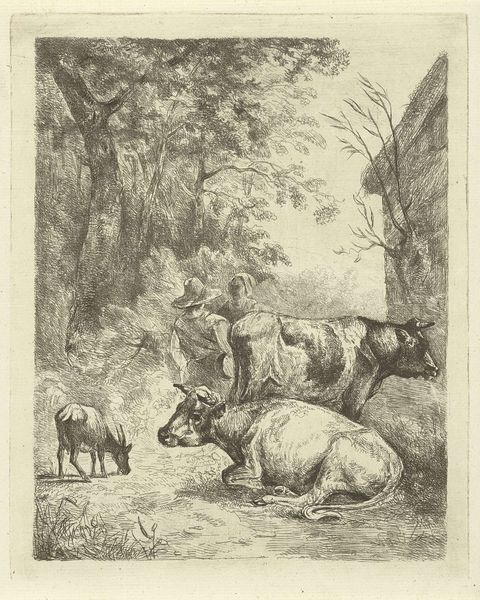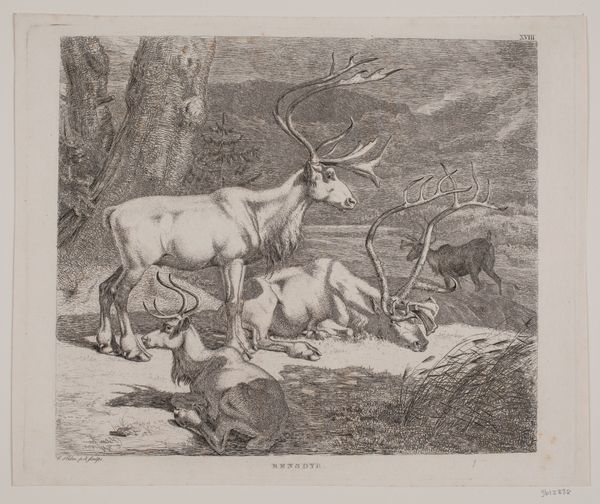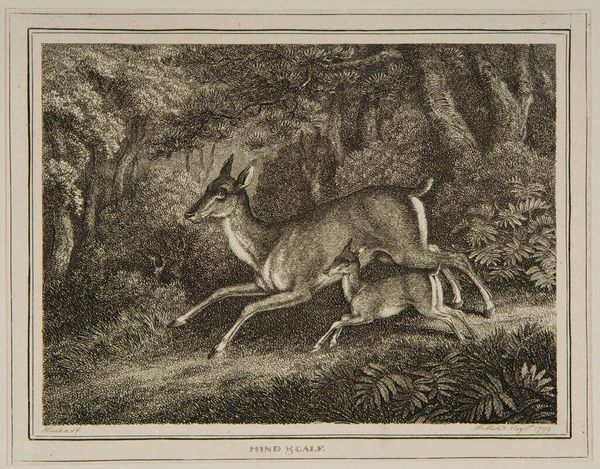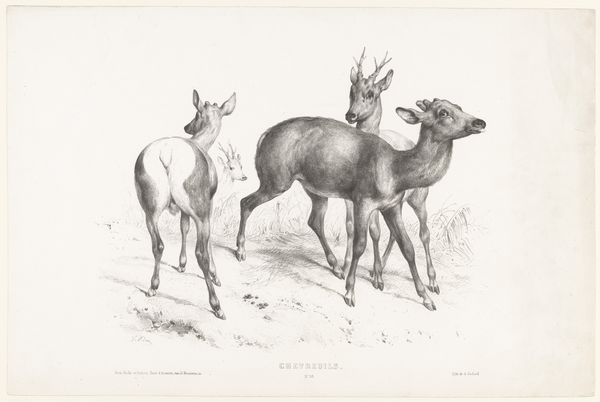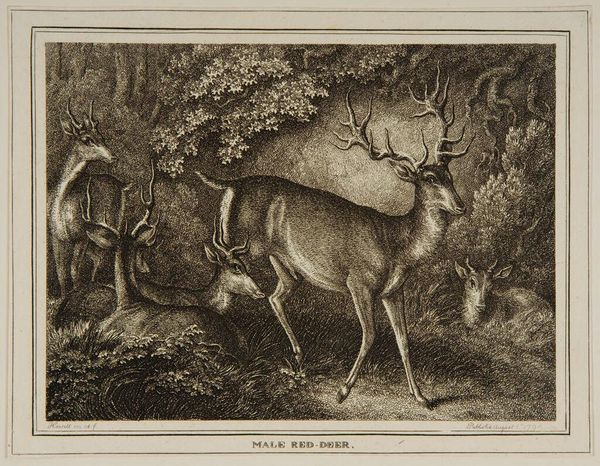
Dimensions: height 317 mm, width 235 mm
Copyright: Rijks Museum: Open Domain
Editor: Here we have Karl Bodmer’s 1867 engraving, “Twee Herten”, or "Two Deer". The level of detail achieved in a print is amazing to me. What stands out to you about it? Curator: Well, prints like this played a significant role in how the 19th century understood and related to nature. This romanticized depiction reflects a specific cultural desire to reconnect with the wild. Consider how these images circulated— in books, periodicals—shaping popular imagination. Do you see how this idealized naturalism contrasts with the increasingly industrialized world outside the city? Editor: I see what you mean! It’s like a constructed escape. So the engraving becomes more than just a pretty picture? Curator: Precisely. The image is a vehicle. Prints were reproducible and accessible. They democratized nature, if you will, bringing a tamed version of the wilderness into the domestic sphere, for consumption and contemplation. Think about how scientific illustrations differed and their respective purposes within society. Where do you see the 'art' within the context of a print like this one? Editor: So it's almost like... early nature documentaries, shaping perception but through an artistic, rather than purely documentary, lens? That’s interesting; it encourages me to consider how we consume nature images today, and their cultural impact. Thanks. Curator: And that connection is precisely what makes this piece so relevant for today’s audience, enabling us to reflect upon how we present imagery to a wider audience to provoke conversations around nature.
Comments
No comments
Be the first to comment and join the conversation on the ultimate creative platform.
